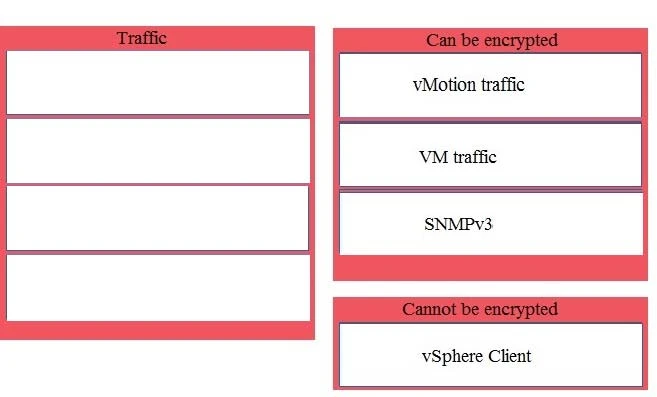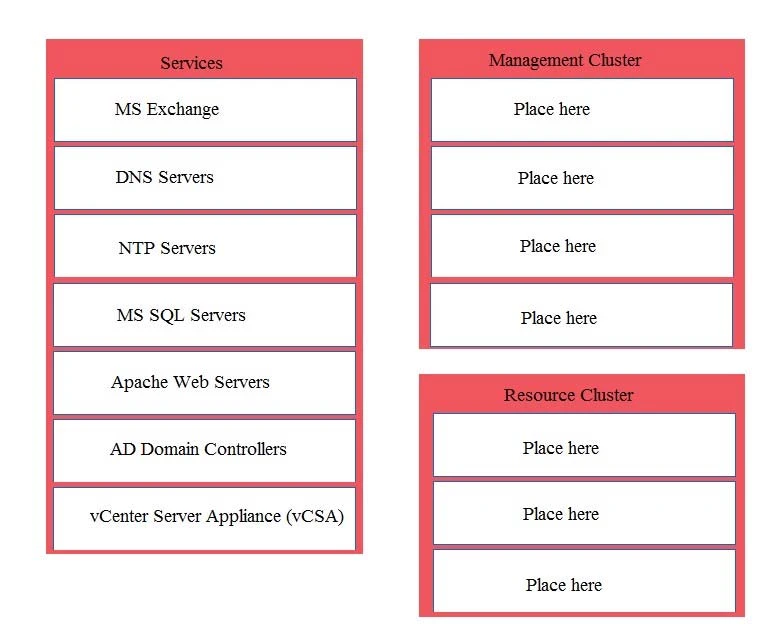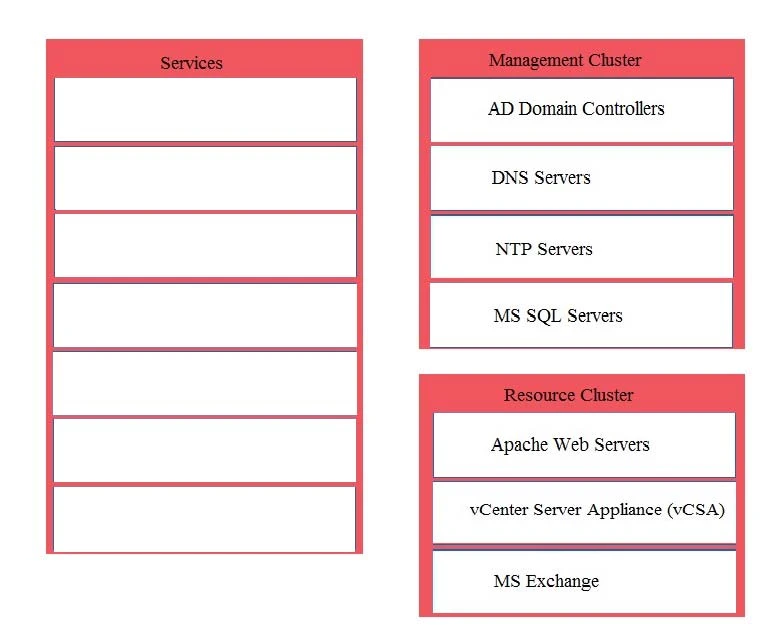(VCSA) when an underlying operating system (OS) patch is released?
The VMware-recommended way to update the vCenter Server Appliance (VCSA) when an underlying operating system (OS) patch is released is to introduce a policy that requires a system administrator to check if a new appliance update (which might include an OS update) is available from the downloads section of MyVMware portal, and follow the VCSA documentation to apply the update. This ensures that the update process aligns with the official VMware guidelines and guarantees that any updates applied are compatible with the VCSA. Automatic updates or manual updates from the OS vendor are not recommended as they may conflict with VMware’s integrated ecosystem.
Sort the traffic by whether it can be encrypted natively by vSphere.
Select and Place:


✑ Two data centers for high availability
✑ Synchronous replication to meet the zero minute RPO
✑ Separating management workloads from application workloads
✑ Dedicated 10Gb uplink for each low latency server
Single management point for the entire environment
Which two actions would meet the design requirements? (Choose two.)
Deploying two clusters, one for management workloads and one for application workloads, ensures the separation of management and application workloads, meeting the requirement for workload separation. Installing two vCenter Servers in Enhanced Link Mode provides a single management point for the entire environment, meeting the requirement for central management. A dedicated 10Gb uplink for each low latency server is essential, but configuring only one Port Group with a dedicated 10Gb Uplink presents a single point of failure and does not align with the need for high availability and redundancy.
✑ Leverage existing hardware that is certified on earlier versions of vSphere but is NOT on HCL for ESXi 6.5.
✑ Upgrade vCenter Server to version 6.5.
✑ Configure separate clusters based on ESXi versions 5.5, 6.0, and 6.5 for newly purchased, certified hardware.
✑ The underlying CPU family is compatible.
✑ There is enough resources available to vMotion virtual machines (VMs).
Given this scenario, what is the correct statement about the ability to vMotion virtual machines between versions of ESXi?
Virtual machines can be vMotioned to the same or newer version of ESXi. This means they can be moved between hosts running ESXi 5.5, 6.0, and 6.5 as long as the underlying CPU family is compatible and there are sufficient resources for vMotion. There is no requirement that VMs created in vSphere 5.x need to be upgraded to newer virtual hardware before being moved to vSphere 6.x.
According to VMware-recommended best practices, on which cluster should each of the services be placed?
Select and Place:

